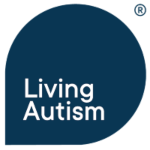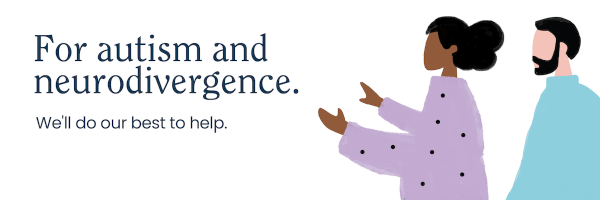SALT (Speech and language therapist)
A therapist who works with individuals to help them develop their communication skills with a range of different communication techniques.
Sara’s diet
A lutein-free diet which is claimed to help people with autism. Luteins are found in green vegetables such as spinach and kale and some other vegetables and fruits.
Savant
Individuals with moderate or profound learning disabilities who also have special talents in areas such as music, mathematics, drawing or calendrical calculations.
SCD (Specific carbohydrate diet)
A diet which excludes complex carobhydrates, eg carbohydrates found in rice and potatoes.
SCERTS (Social-Communication, Emotional Regulation, and Transactional Support)
An intervention using social, communication, emotional and transactional support to help individuals with autism.
Schizophrenia
A mental health problem which is characterized by intermittent psychosis. In the past autism was thought to be a version of schizophrenia and was sometimes called ‘Infantile Psychosis’.
SCIT (Social Cognition Training Program)
An intervention which is designed to improve social cognition and social functioning in people with disabilities including autism.
Scotopic lenses
A type of coloured filter intended to block wavelengths of light to which some individuals are sensitive. The lenses can be worn in spectacles.
Script fading
An intervention whereby an individual is taught to initiate conversations and social interactions with peers with the use of a script about recently completed, current or future activities. The script is then gradually ‘faded’ until the individual is able to initiate the conversations without the use of the script.
Secretin
A gastrointestinal hormone which helps in the digestion of food.
Sedatives
A group of drugs which have a soothing, calming or tranquilizing effect and which are used to reduce anxiety and stress.
Seizures
Sudden changes in behaviour as a result of an excessive electrical activity in the brain.
Self-advocacy
When a person takes action to say what they want and to secure their rights in order to obtain the services they need.
Self-efficacy
A term used for cognitive behavioural intervention where an individual is taught to monitor their own behaviour.
Self-injurious behaviour
Violence directed towards oneself including biting, hitting, banging ones head.
Self-stimulation
Behaviours found in people with severe learning disabilities which are used by them to provide stimulation.
Semantic-pragmatic disorder
A disorder whereby the individual has good grammatical language, however is unable to use the language in a socially appropriate manner.
Semantics
The science of language which deals with the meanings of words.
Sensory deprivation therapy
Another term for REST (see REST).
Sensory integration therapy
A form of occupational therapy whereby special exercises are used to strengthen the individual’s sense of touch, balance and sense of the body in relation to its environment.
Sensory integrative dysfunction
A disorder whereby the individual experiences unusual reactions to sensations such as sound, light or touch.
Sensory profile
A questionnaire which identifies an individual’s responses to sensory events in daily life.
Sensory sensitivity
Unusual reactions to sensations such as sound, light or touch.
Seratonin
A hormone found in the blood, digestive tract and brain which can alter a person’s mood.
SGD (Speech Generating Device)
An augmentative electronic device which enables the user to speak.
Sign language
A language using manual communication instead of sounds to convey meaning.
SLT
Speech and language therapist (see SALT).
Smith Magenis syndrome
A genetic disorder characterized by self-injurious behaviour, sleep disturbance, developmental delay, short stature, hyperactivity and destructive behaviour.
Snoezelen
A controlled multisensory stimulation environment used for people with disabilities to soothe and stimulate them.
Social cognition
The ability to gather information about and understand the rules and concepts that govern our social interactions.
Social skills groups
Groups specially set up to support individuals with autism to practice and improve their social skills in a safe and supportive environment.
Social Stories
Stories written for individuals with autism to help them understand and prepare for social situations.
Son-Rise Program
An intensive intervention which is based upon the person with autism taking the lead and the supporters joining in with the individual’s chosen activities.
SPD (Sensory processing disorder)
A disorder whereby an individual’s brain misinterprets everyday sensory information such as touch, sound and movement.
Speech and language therapy
A language therapy whereby the therapist works with individuals to help them develop their communication skills with a range of different communication techniques.
SPELL framework
An educational framework developed by the National Autistic Society to promote and enable the understanding of autism and responses to reduce some of the difficulties presented by the condition.
Squeeze machine
A machine which applies lateral pressure to the body. It is also known as a hugging machine.
SSRI (Selective Serotonin Reuptake Inhibitors)
A group of anti-depressant drugs which enhance the reuptake of serotonin as opposed to inhibiting it, as many other anti-depressant drugs do.
Statementing
Providing a formal document which specifies the additional support a person in school might need to fulfil their learning potential.
Steiner Waldorf approach
An approach to education which provides a creative rather than formal learning environment.
Stereotypy
A series of repetitive actions which appear to lack curiosity and creativity and which could involve self-stimulation of different senses, eg rocking, flapping, spinning. This behaviour can also be called ‘stimming’.
Stimming
See Stereotypy.
Stimulants
A class of drugs used to treat inattention and hyperactivity.
Structured teaching
Also known as TEACCH. See TEACCH.
Sulphation
The process of adding sulphate to the body through supplements. Very low levels of plasma sulphate can be a factor in exacerbating the negative experiences of autism.
Symptom
An indication of the presence of a disease or disorder.
Syndromal autism
The presence of an underlying condition, as well as that of autism, such as tuberous sclerosis.

